Foraging for mushrooms and other wild-growing ingredients is one of the most fun and rewarding activities you can get up to when out and about in Scotland.
In fact, much of what you can pick while foraging in the north and north east would be considered food for fine dining, and often beyond a normal household budget.
Mushrooms in particular are plentiful, with more than 12,000 species of fungi growing in forests, grasslands, mountains and coastal areas.
So why not learn how to find them for free?
Here, Aberdeen foraging expert Mirjam Brady-Van den Bos will walk you through what mushrooms you can and can’t eat, and exactly when and where to look for them.
First, make sure to read the Scottish Wild Mushroom Code to ensure your foraging is safe and responsible.
Autumn mushrooms
Shaggy Inkcaps
“This mushroom looks utterly inedible, but is in fact delicious and quite safe for a novice forager. They are like ‘judge’s wigs’ springing up from the grass overnight, then the next day they are gone again. When you pick them, make sure you pick only ones that have no blackening of the gills, and make sure you cook them immediately. That’s because within even a few hours, they will decompose into a puddle of ink. Quite usable ink, but you can’t eat it at that stage (obviously). They’re lovely when simply pan fried. There’s a good patch at Blacktop near the entrance to the Countesswells development in Aberdeen.
Hedgehog Mushrooms
Another safe novice forager mushroom. You can’t mistake it for anything else in the UK. Instead of gills, the mushroom has spikes. It’s creamy white and very sturdy. It grows in groups in leaf litter, usually with beech and can be found along South Deeside Road in Aberdeen. It’s got a slight bitter note and is wonderful in omelettes.
Winter Chanterelles
These are the hardest to spot of all mushrooms, because they look like a fallen leaf and they grow amongst… well… leaves. Their caps are brown and wavy. Their stem is yellow and waxy. When you find one, and your eyes adjust to the forest floor, you usually find hundreds growing all around you. Try looking at Foggieton and Hazlehead. They are nice in an omelette or just pan fried with salt and pepper. They’re nicest when they’ve browned and crisped a bit in the pan.
Winter mushrooms
Blewits
These mushrooms often come on after a frost. The gills have a lilac hue, hence the name. They grow in leaf or needle mould. Take care when picking them, and preferably cut them at the base instead of lifting them, as lifting them may damage the mycelium. They have a strong perfumed taste and go very well panfried with bacon. Look in the verges of the South Deeside Road near Falls of Feugh.
Oyster Mushrooms
They fruit all year, but I’ve most often found them in winter on dying trees near Dunecht. They tend to be stimulated by weather changes, for instance a period of frost followed by thaw, or spells of rain. I have found them mostly on dying chestnut trees and beech stumps. Check that the gills run down the stem and that there is indeed a (short) stem, usually with a woolly bit at the base. They are delicious pan-fried in slices, with just salt and pepper, but also make a terrific blended soup.
Velvet Shanks
These fabulous little mushrooms with black stems and orange-brown sticky caps also come on after a frost. I have seen them mostly on the stems of gorse bushes, along every country lane that has these. Try Cullerlie side roads and Glack Wood in particular. They taste sweet, with a definite hint of toffee. Best eaten on their own with salt and pepper, and even better, eaten al fresco on a cold winter’s day on a camping stove.
Jelly Ears
They have this name because they look like ears in jelly form. I have most often found them on the branches of elder trees (but also on beech once) along the Deeside Railway line. They are best dried in a low oven or over a radiator, then rehydrated simmered in a broth. They take on any flavour that’s in the broth. Some people even rehydrate them in alcohol and then dip them in molten chocolate!
Chaga
This doesn’t look like a mushroom at all. It grows on birch trees (mostly) where it looks like some kind of scary outgrowth. It’s jet black and may have orange visible in the cracks. You need some form of a saw to get it off the tree. Be careful how much you take; chaga takes many years to grow, and only has a very short time window where it spreads it spores. With careless harvesting it’s possible to strip an entire area of it without a chance of it reproducing. It’s best to take only those chagas that are larger than a cantaloupe melon and then not the whole thing, but rather take a third and leave the rest on the tree. I usually go to Muir of Dinnet. You can chop it into small pieces, dry them and then grind them to a powder in a food processor, to flavour and colour your herbal teas. It doesn’t have a strong flavour so it won’t overpower.
Spring mushrooms
St. George’s Mushroom
It’s usually the first white mushrooms to appear. It’s quite stocky and sturdy, and the smell is a key ID feature: it smells like a bag of white flour. It can be found in lots of areas; in leaf litter, in circles in grass, or under hedges.
Spring Cavalier
A beautiful tasty mushroom that is not very common; I’ve seen it growing in needle litter under coniferous trees, particularly in the grounds of the James Hutton Institute in Aberdeen. They change in appearance dramatically from when they first emerge to when they are mature, so when you think you’ve seen one, it’s worth leaving it for a few days and checking on it every now and then just to see how it changes.
Dryad’s Saddle
A spectacular mushroom that should be eaten when they are young and small. They grow on deciduous trees and tree stumps. A key ID is the smell; when you slice them, they surprisingly smell of cucumber. Another feature is that they are black near the base of the stem. I’ve spotted them at the ruin off Airyhall Road footpath (locals will know what I mean).
Early summer
Scarletina Bolete
This mushrooms looks like it shouldn’t be edible, but it is. It has a brown cap, and the stem has red dots on it. When you cut it, the flesh turns blue. This disappears when you cook it. It needs to be cooked well, about 15-20 mins (add some water if the pan dries up). I’ve found it among mature beech trees on the South Deeside Road between Maryculter and Durris, usually perched on top of the mossy banks.
Charcoal Burner
This is a member of the Russula genus. The cap colour can be varied, from green to purple or a combination. You can see very faint streaks radiating from the centre. The stem is brittle and will break easily. The gills are not as brittle as other Russula’s and they are a bit oily. Nibbled raw, they taste mild and a bit nutty. If it tastes hot, it’s not a charcoal burner. Can be cooked like any other mushroom.
Mid-summer mushrooms
Chanterelles
These beautiful yellow mushrooms can be found in damp mossy forests, such as the woods south of Banchory. There are 3 key ID features: they smell of apricot, their flesh is white when you cut them lengthwise, and they have false gills (the gills are mere folds in the cap, rather than gills you can take away from the cap). They can be cooked like other mushrooms, and are very good in scrambled egg.
Giant Puffballs
They say you can only mistake these for a football or a sheep. If you find something growing on the grass that looks like a white ball, is attached to the ground only by a very small attachment, and feels firm, you’ve got yourself a giant puffball. Sliced and pan fried on the day that you find them, is the best way to eat them. They like damp, lush grass like in Cruickshank Gardens at the University of Aberdeen
Agaricus mushrooms (often known as field mushrooms, horse mushrooms, and Agaricus bernardii)
These mushrooms are related to our supermarket mushrooms. They look similar but more impressive. They grow in grass, sometimes in large numbers. Their gills are pink or brown. Check that they are not ‘yellow stainers’ (these are poisonous members of this genus) by running your nail across the cap. If it stains yellow, it’s a no-no.
Porcini
Also called ‘penny bun’, because that’s what the cap looks like. They have a fine white net curtain pattern over the stem. When you cut it, it should not stain blue or red. I have found them growing with Scotch Pine deep in a forest, but also randomly in the grass at roadsides (where there once was coniferous woodland) and on golf courses with native trees.
Giant Polypore
These grow from the roots of beech trees, producing heavy crops. They start off yellowish and turn brown as they mature. They’re best picked when young, as they get very tough later on. I’ve seen them in urban areas like on the grass growing out of a tree stump opposite Great Western Medical practice on Seafield Road and on a living beech on the Craigton Road in Aberdeen. Slice off what you will need with a knife, and leave the rest to grow. The flesh will start to stain black within 20 mins or so of handling; this is normal. It also turns black when you cook it.”
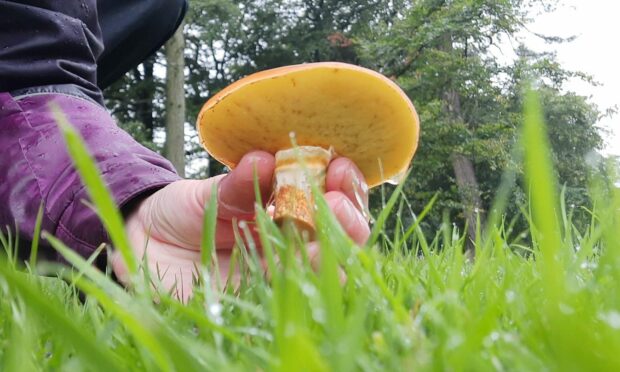
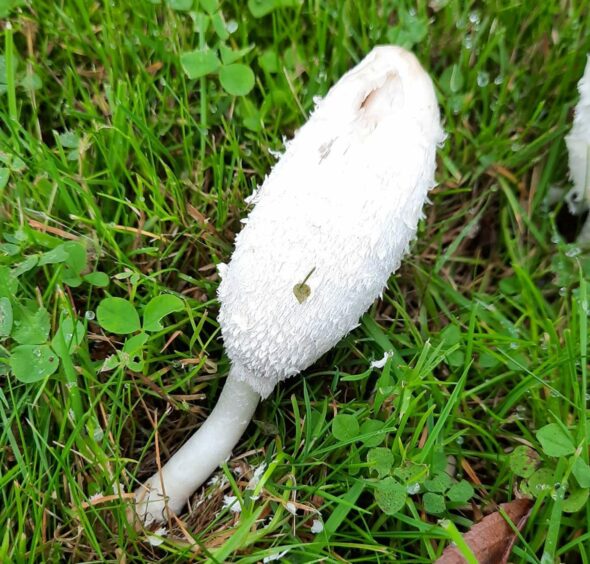
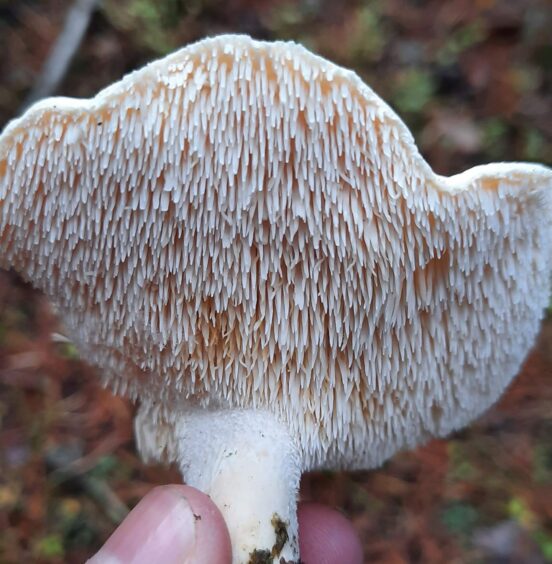
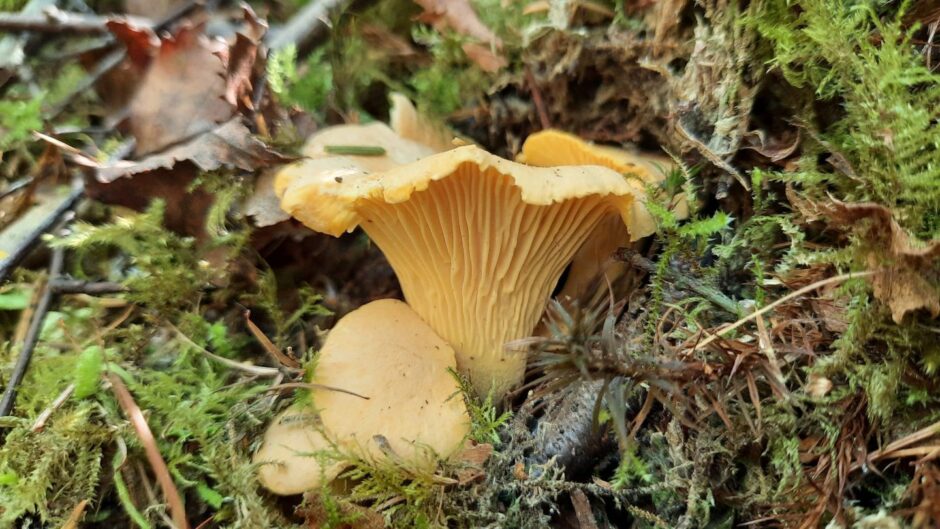
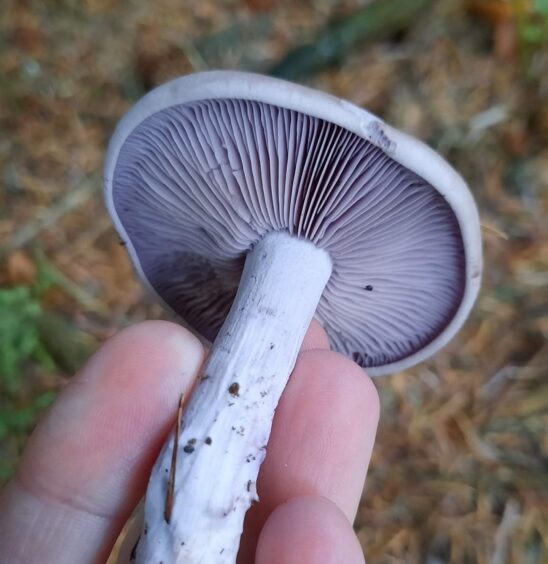
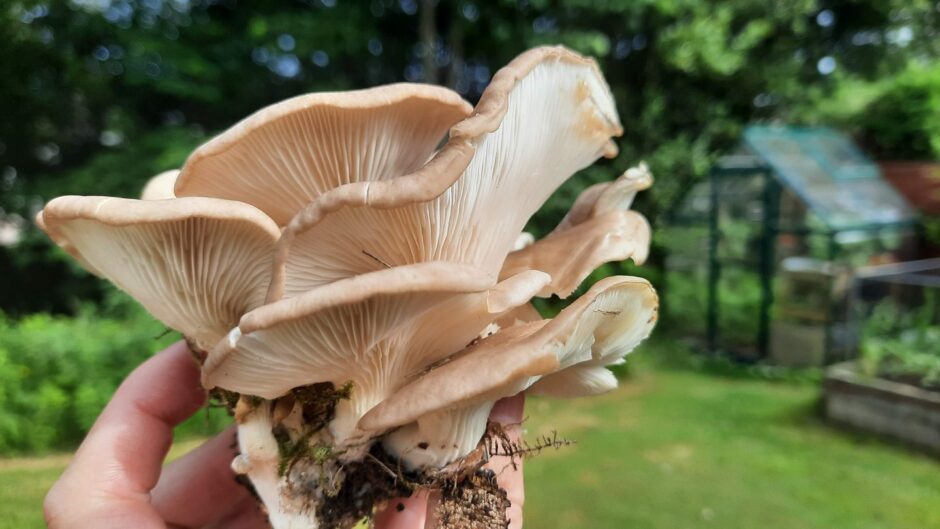
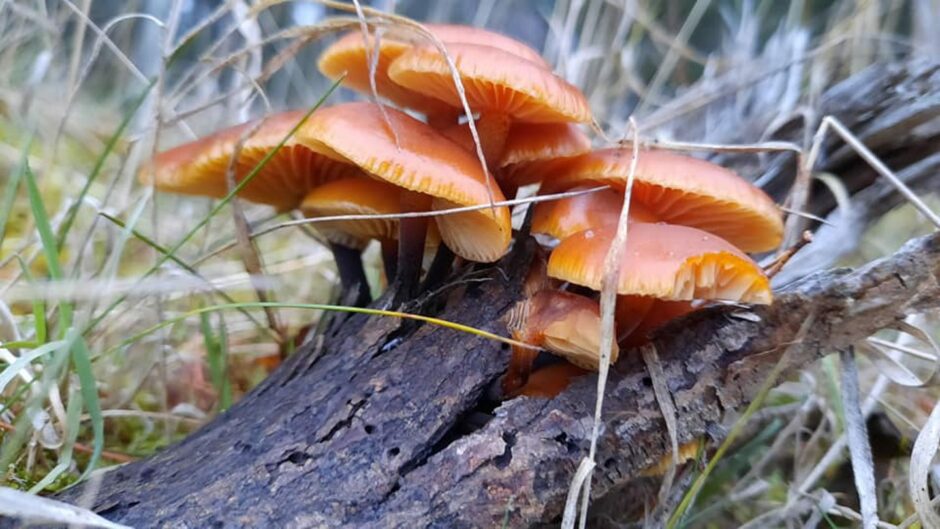
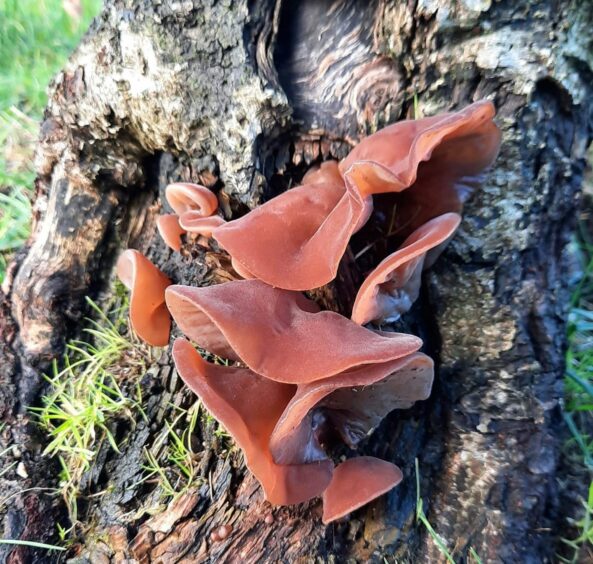
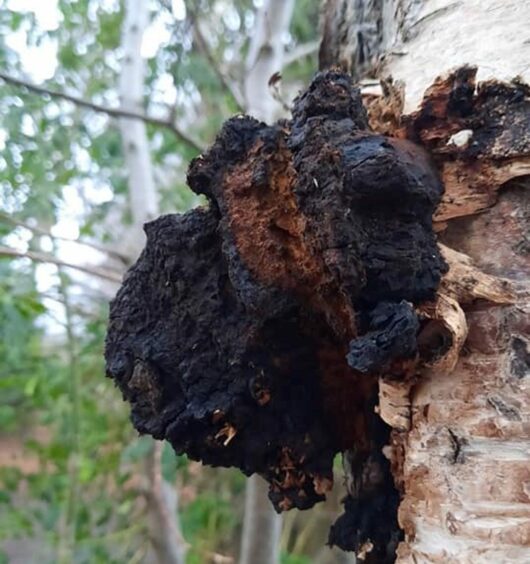
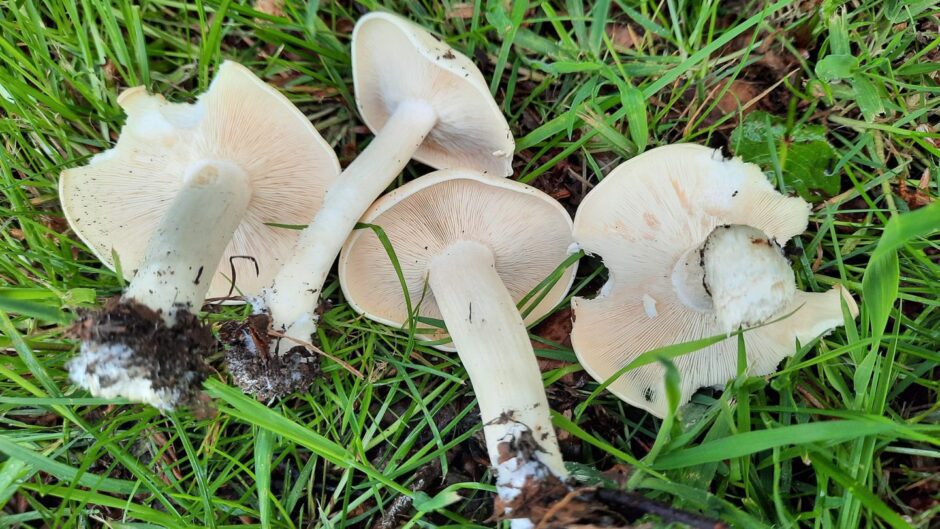
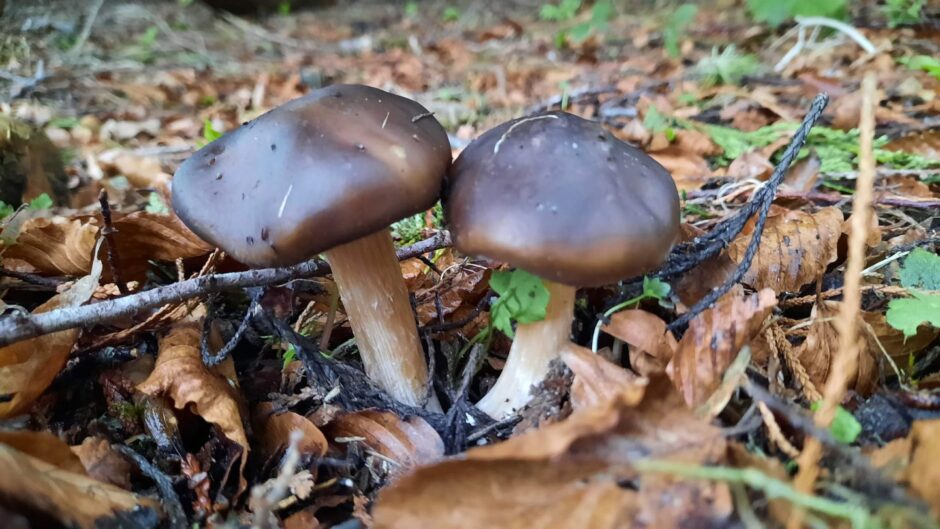
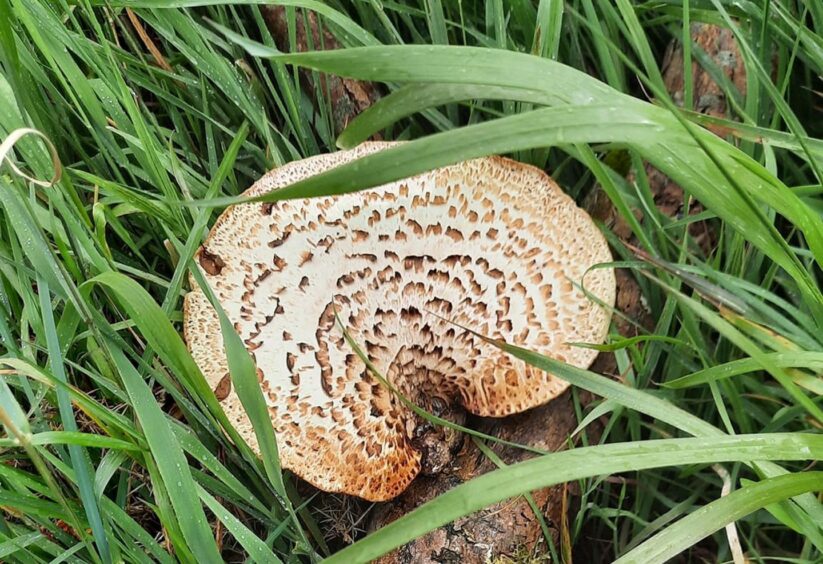
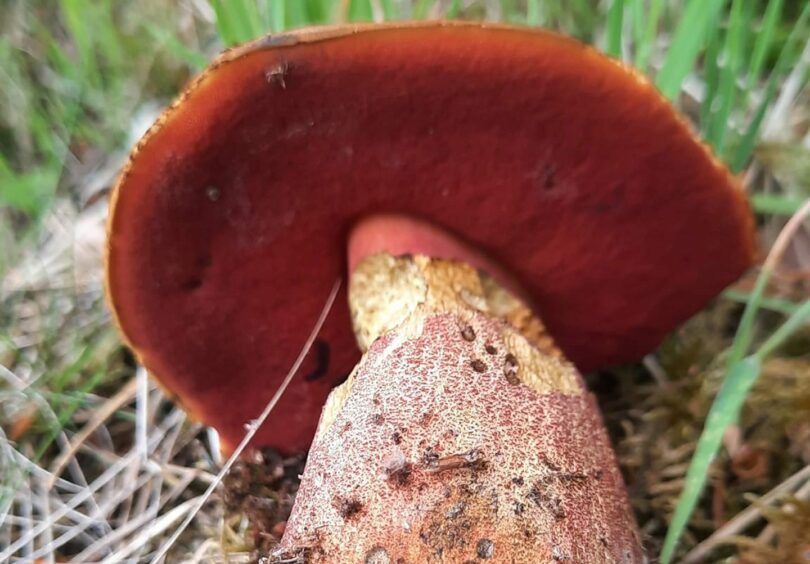
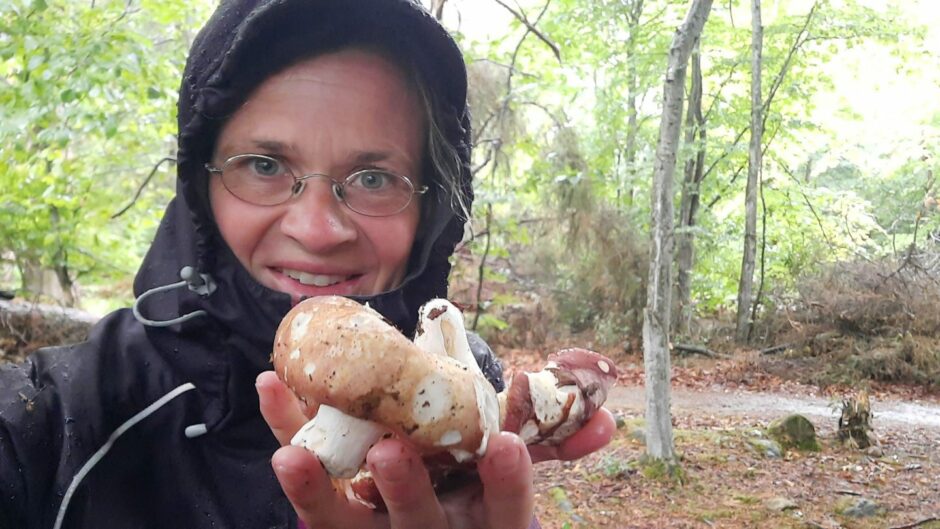
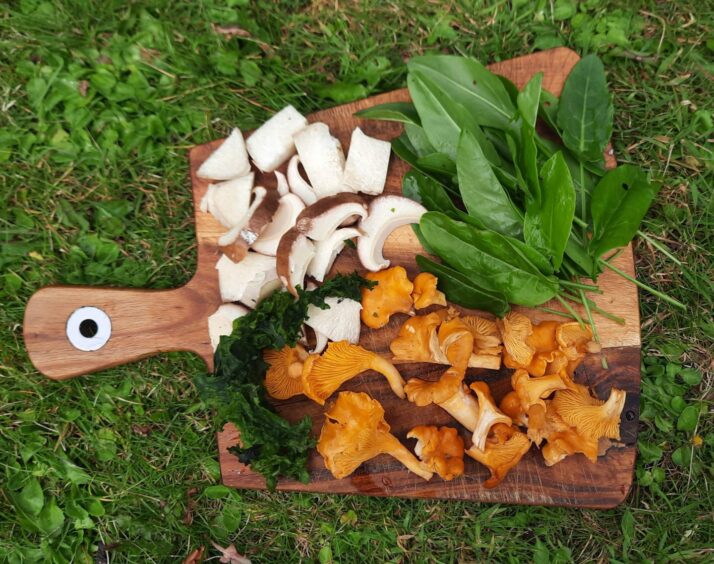
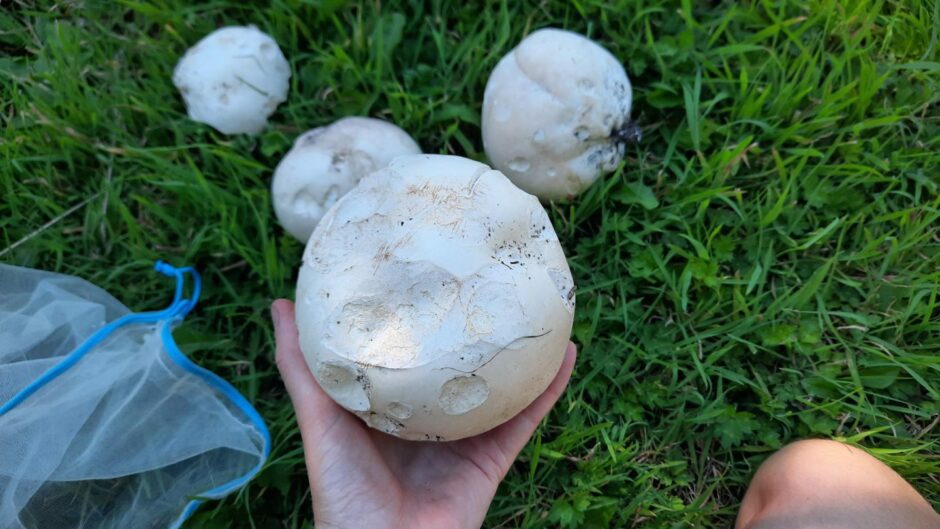
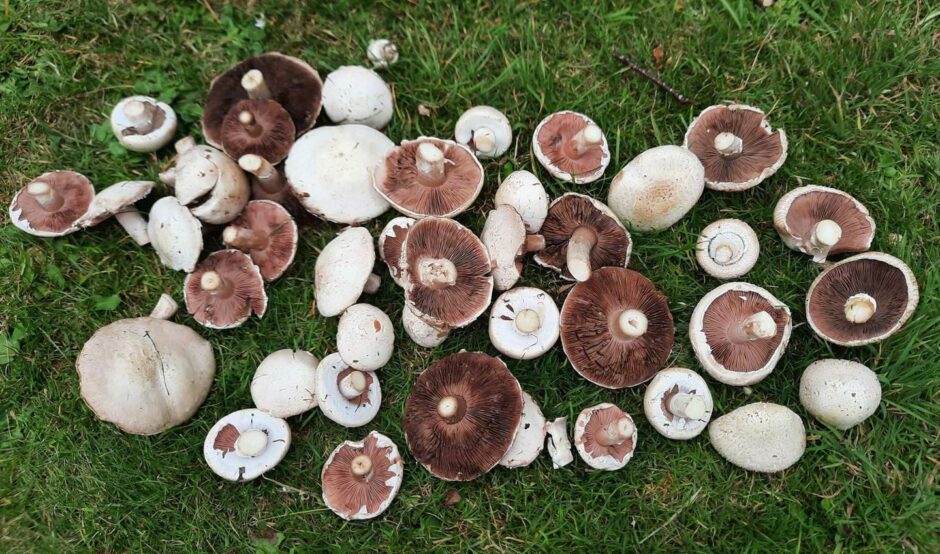
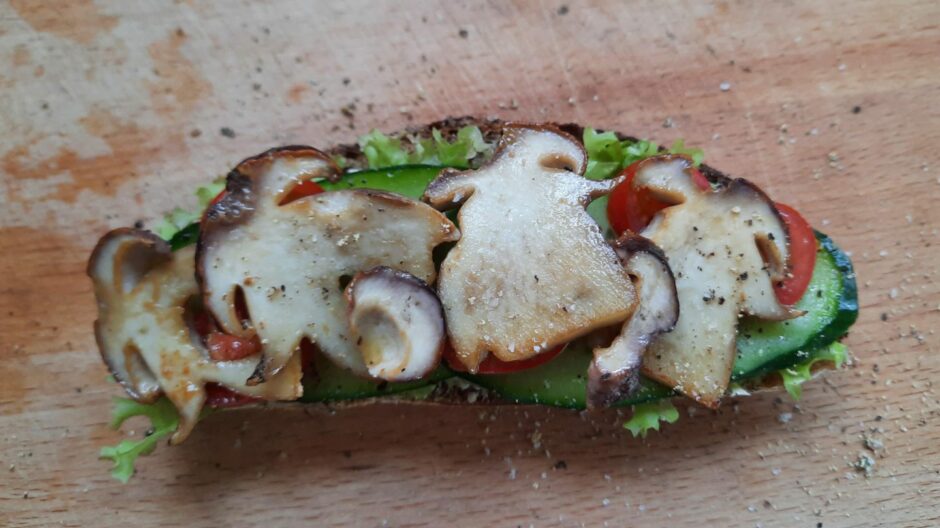
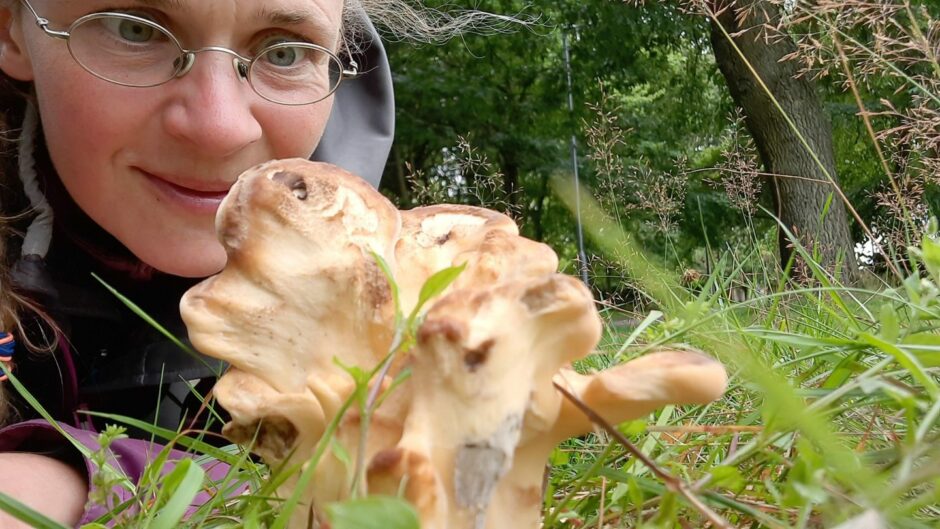










Conversation